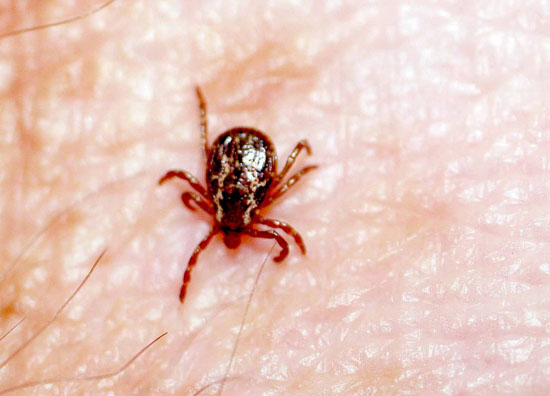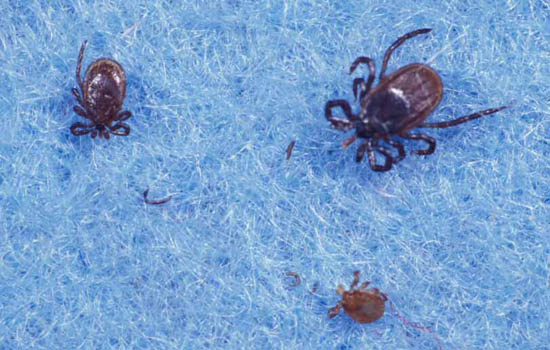Issue 7, June 5, 2009
Tick Protection
Reports from the Illinois Department of Public Health show that disease incidence from ticks has been rising over the last few years. Although the number of reported cases is a small percentage of the population, it is still important to protect yourself from these giant mites. One of the major mortality factors in ticks is losing water, so they survive better in moist conditions. The increased rainfall of the last two springs may have increased their numbers. Public health professionals have noticed an apparent increase in tick numbers this spring.
Lyme disease, which is transmitted by the deer tick subspecies of the blacklegged tick, occurs primarily in the northern two-thirds of Illinois. Reported cases in the state have climbed steadily from 35 in 2000 to 149 in 2007. Ehrlichiosis, which is a disease with symptoms very similar to those of Lyme disease, is transmitted by the American dog tick and is primarily found in southern Illinois. Reported Illinois cases have climbed from one case in 2000 to 50 in 2007. Rocky Mountain spotted fever is transmitted by the American dog tick and reported Illinois cases have risen steadily from five in 2000 to 39 in 2007. Unlike Lyme disease and ehrlichiosis, which are bacterial diseases commonly cured with early antibiotic treatment, Rocky Mountain spotted fever is a viral disease, as are colds and flu, and has no direct treatment. Severe cases can result in death.

American dog tick (male).
In recent years, deer ticks have become more common, with some areas having numbers as high as states such as Wisconsin and Minnesota that have high incidences of Lyme disease. With this increase in numbers, it is expected that Lyme disease will continue to increase in the state. Lone star tick used to be very common in the southern one-third of Illinois and was not found in the northern third of the state. It is now common throughout the state.

Deer tick adults and nymph.
June is when deer tick nymphs are most abundant. The pinhead-sized nymphs are common in forested areas with abundant leaf litter, being the same habitat as native mice that are their primary host. Nymphs become infected with Lyme disease when feeding as larvae on mice. They commonly feed on mice as well as larger mammals, including humans. They tend to crawl up to the groin where they feed. After 24 hours, they can start introducing Lyme disease bacteria into the host.
Ticks are most common in wooded areas and those with tall grass, but they can be associated with any vegetation, particularly in southern Illinois. Landscapers should protect themselves from ticks with repellents containing DEET or picaridin which are sold in major brands such as Off and Cutters. Soybean oil repellent is sold as Bite Blocker. All three are effective, lasting over an hour per application, and commonly several hours. Repellents containing 20-30% DEET are the most effective in repellency and longevity. Higher concentrations of DEET do not last as long, probably because the lotion components in lower concentration products reduce evaporation. There are also permethrin (Permanone) containing clothes treatments that will kill ticks on clothing. Wear light-colored clothes so that it is easier to see ticks crawling on them. Wearing long pants with the cuffs tucked into boots reduces the likelihood of ticks crawling up the legs.--Phil Nixon
Author:
Phil Nixon